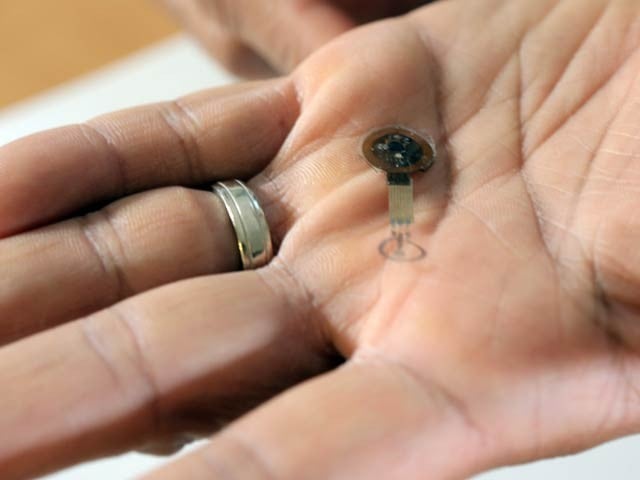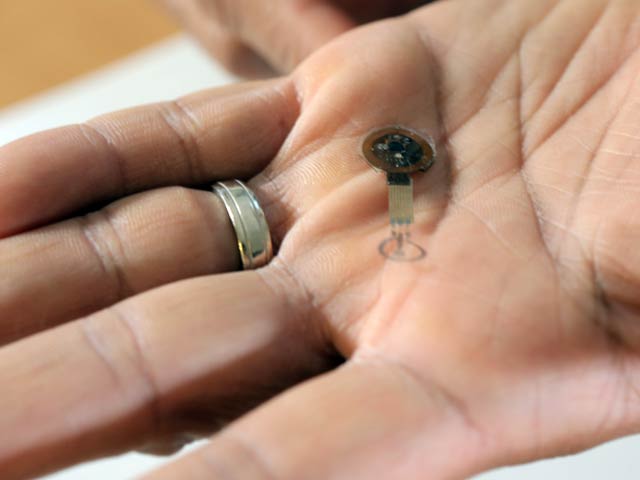
Dr. Prof. Guillermo Amir has an electric strip on his hand. Photo: Courtesy of Northwestern University
Illinois: Some wounds take a long time to heal, but now an electrical bandage has been developed that not only heals the wound 30% faster, but also continuously transmits information about the wound to an external device such as a smartphone.
Interestingly, the bandage dissolves after it has done its job. This flexible bandage and bandage has been tested on injured mice and has shown remarkable results, with the wound healing 30 percent faster. It was created by Northwestern University scientist Professor Guillermo Amir and his colleagues, whose details have been published in the journal Science Advances.
It is especially a boon for the elderly and diabetics, whose minor wounds turn into long-standing canker sores. Even diabetics have to have their limbs amputated and this is the reason why thousands of diabetics lose their fingers and feet every year around the world.
This soft electrical invention is easily stuck on a piece of cotton and when applied to the wound, it starts emitting a mild electric current. Thus the wound heals faster. Then microelectronics-enhanced sensors and circuits monitor the wound continuously, and reports can be received on a tablet or smartphone. It can also indicate an infection in the wound.
However, the amount of electrotherapy is so low that it does not cause any irritation to the wound. Although work on it was going on since 2018. Its circuitry transmits data in real time by generating Near Field Communication (NFC).
Experts applied electric shock to rats for just 30 minutes a day and the wound healed faster. However, human trials are still a long way off.
(function(d, s, id){
var js, fjs = d.getElementsByTagName(s)[0];
if (d.getElementById(id)) {return;}
js = d.createElement(s); js.id = id;
js.src = “//connect.facebook.net/en_US/sdk.js#xfbml=1&version=v2.3&appId=770767426360150”;
fjs.parentNode.insertBefore(js, fjs);
}(document, ‘script’, ‘facebook-jssdk’));
(function(d, s, id) {
var js, fjs = d.getElementsByTagName(s)[0];
if (d.getElementById(id)) return;
js = d.createElement(s); js.id = id;
js.src = “//connect.facebook.net/en_GB/sdk.js#xfbml=1&version=v2.7”;
fjs.parentNode.insertBefore(js, fjs);
}(document, ‘script’, ‘facebook-jssdk’));



